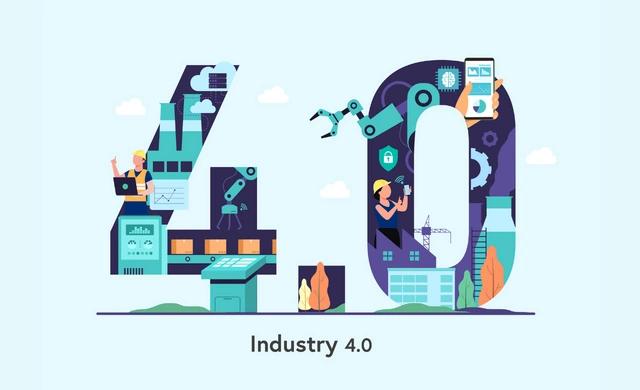
17 Nov Industry 4.0. Action plan update
2021: Rieusset and Industry 4.0
In 2019, a consultancy structured in two phases – diagnosis and action plan – was begun. In the diagnosis, Rieusset obtained a very positive above average result, and different aspects to work on and improve were determined.
An action plan (also called a roadmap) with a three-year projection was established, in which the strategy to be followed over the next few years was defined in order to address the digitization process of Industry 4.0. This focused on the following pillars:
- Production processes
- Products, services and new business models
- IT infrastructures
- Data and analytics
- Organization, strategy and HR
- Business ecosystem: clients, suppliers and partners
The pandemic put a stop to this process, until we were able to resume the project in 2021. Industry 4.0 is one of our priorities, which is why we set the goal of completing its implementation within a maximum period of two years, incorporating all of the proposals for improvement from the action plan in order to be more competitive and efficient.
Find out more details about our steps towards Industry 4.0 here.
“Industry 4.0. Action plan update” by Jordi López (General Manager) of RIEUSSET
Just one year ago we informed you about how we had started the Industry 4.0 project at Rieusset, with the first diagnosis of 2017 in which we assessed how Rieusset was doing at that time and the plan that we defined in 2019 with a three-year projection for its complete development. Now we would like to inform you of what we have done since then and where we are with the project, which was not finished this year because we have been expanding it.
How has the Industry 4.0 project advanced at Rieusset?
At that time we said that we had established a roadmap whose main points requiring our attention were the need to connect different processes, eliminating those that do not add value or automating them, if possible, to make them more efficient.
Let us remember that our plan focused on six pillars:
- Production processes
- Products, services and new business models
- IT infrastructures
- Data and analytics
- Organization, strategy and HR
- Business ecosystem: clients, suppliers and partners
At the level of production processes, we launched the new data collection system at the beginning of 2022, as we explained in our post on the “paperless factory” where we are still incorporating new capacities that will improve production data collection, such as the ink data management system that will get under way before the end of this year. Similarly, within this section we highlight the improvements made to the preventive and corrective maintenance management system that is now connected to the production data capture system.
Within this level, still in the development definition phase, we are working on a procedure for process optimization based on the information collected in real time. Likewise, we have started a project to evaluate the possibility of automating the internal movement of materials.
At the level of products, services and new business models, the new digital printing business model is already fully operational, although we are exploring new ways of approaching customers with this technology. The potential that this printing technology offers us is enormous, and although we find that in many cases it is necessary to explain its full capacity to the clients’ marketing departments so that they rely on it for all its applications, the response that we get from the market is opening up a lot of opportunities and generating many new ideas in this interaction with our clients.
At the IT infrastructure level, we want to highlight that we have been able to incorporate personnel to help us in the development of an area that we consider crucial for the development of the Industry 4.0 project and for the future development of the digitization of systems at Rieusset. Currently, we have a robust industrial communication network prepared for potential external and internal attacks that we constantly review to improve its protection and on which we also work in order to improve the speed of response that we give to users to improve their service, in addition to providing access with guarantees to those who need it.
At the level of data and analytics, we are somewhat behind the implementation dates established in the first version since the conceptualization and design of the integrated and centralized knowledge database has not yet been defined. We do have information in real time and we have eliminated many papers in our plant which allows us to have the information in a database, but we have not yet completed the automation of report generation for decision making.
At the organization, strategy and HR level, we have been able to complete the first phase on constant awareness and training in Industry 4.0 throughout the entire organization and we are ready to start the second one where we will deal with issues such as data analytics and artificial intelligence.
At the level of business ecosystems, we implemented a CRM three years ago and now we want to advance in new phases such as the automation of processes that the CRM allows us to carry out: management of offers, orders, integration with factory management and planning or even communication with clients.
Industry 4.0 – a change of culture?
Before finishing this post we also wish to mention what we are seeing that all these changes imply for the company and –most of all– for the employees.
It is obvious that Industry 4.0 brings greater efficiency to the company, enabling it to be more competitive, but at the same time it is bringing a change in culture which, especially for working people, influences their way of working. The systems that are being implemented collect more information, in real time, revealing facts, ways of working and inefficiencies that the previous systems did not show. And although data is also collected on machines, with regard to workers this makes them more vulnerable, since it is possible to obtain traceability of what they do.
Therefore, together with the introduction of all the new systems, the company needs to transmit to the workers the message that Industry 4.0 is not a system for controlling them or reducing the workforce, but rather that automation or digitization should focus on being able to know the processes better, optimizing them, eliminating those tasks without added value or, if they cannot be eliminated, making them more efficient. The time thus saved is for increasing production capacity and not for eliminating jobs but rather for dedicating the additional time to carrying out tasks that do give value to the product or service that the company provides.
This is not something that can be changed in a day, in a week or in a year, but something that requires time and, above all, a high level of trust.
| We Manufacture: | Meet Rieusset: |


